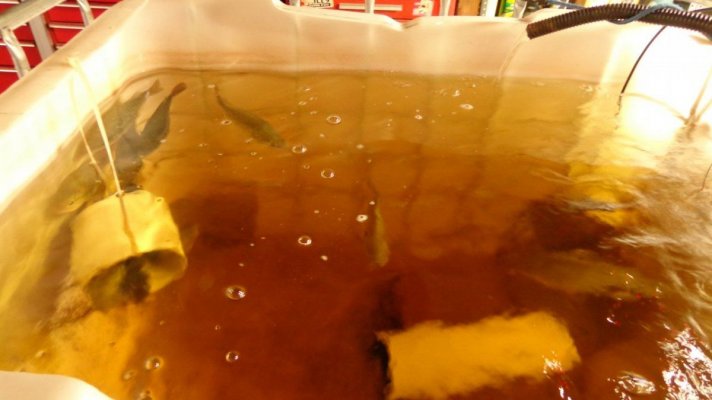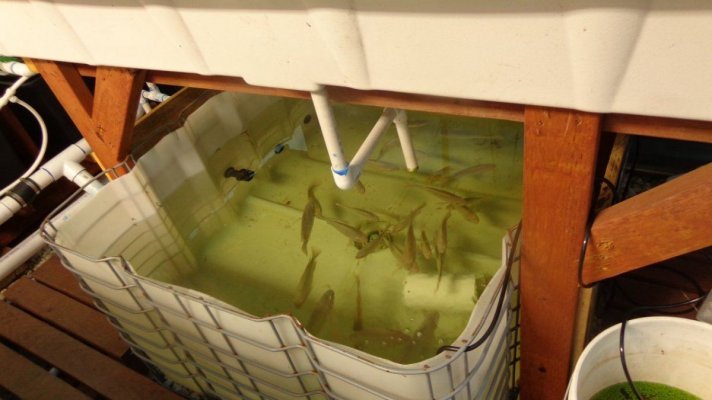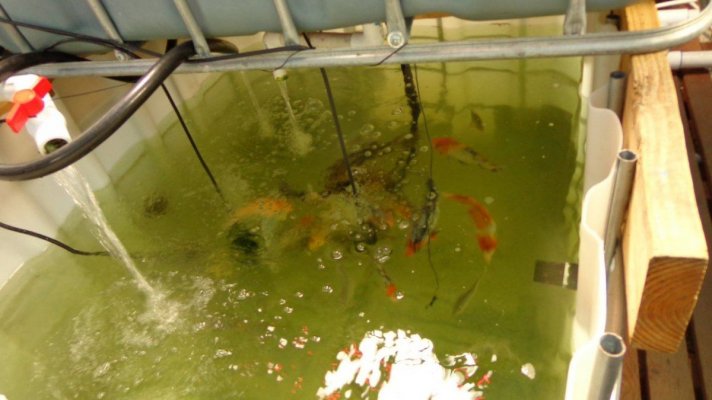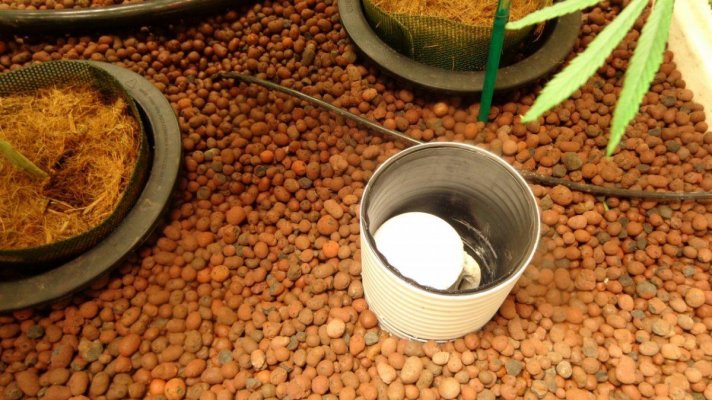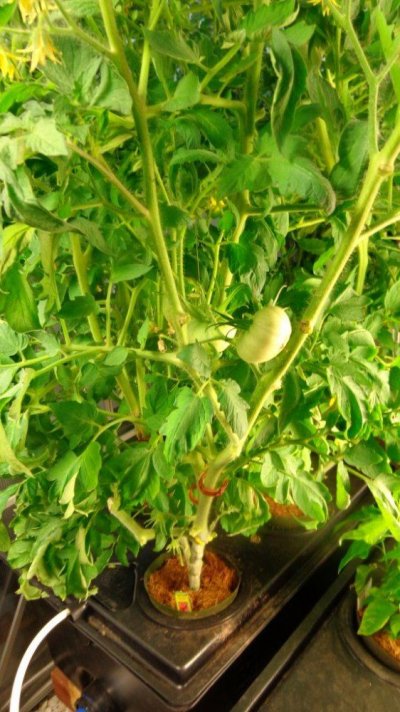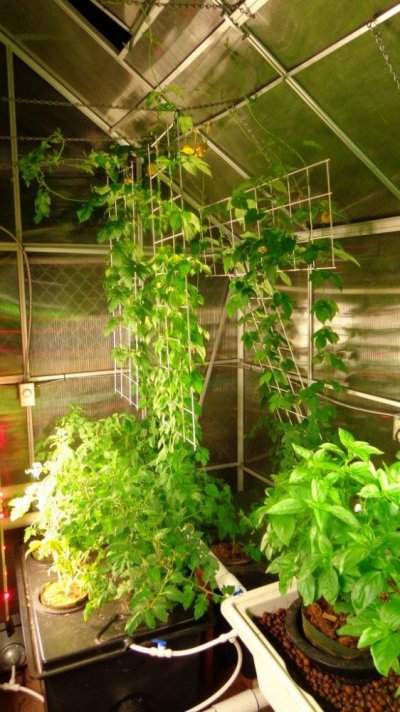chazbolin
- 162
- 43
If anyone has any experience with growing weed in aquaponic gardens I'd love to see how they turn out. Feel free to share it here.
In my case this is a run of AC/DC, Williams Wonder and Harlequin which I took from clones to a new aquaponic garden setup. The fish tank has a combination of 11 largemouth bass and bluegill. Other than the fish waste and the aquaponic elements which picks up the trace elements that are lacking in fish waste that is all that's being done for nutrients. I've been feeding the fish every couple of days with shiners, a bait fish that comes in these frozen bags @ $5.00/bag. A bag lasts for 2-3 feedings.
If you're interested in trying this type of gardening there is enough information out there on the web as to how to set these systems up. With the way mine is set up nutrient rich fish water is gravity fed from that tank over a 4 x 4 tray and dropped down into a sump where it then returns to the fish tank. The tray acts like a big biodigester where beneficial bacteria is colonized in the hydroton. Inside the hydroton the plants got set into 8" net pots with fabric liners that hold coco coir fiber. The coco is imported from Brazil and is unlike the 'premium' Indonesian coco in that it's 55% fiber 45% pith which is good for capillary action (no perlite needed) and low (.25%) salinity which is good for the fish. The tray will ebb and flow 4 x an hour with a bell siphon that fills the tray with water than opens up and drops the water down all at once. When the water is low in the tray the siphon sucks in air which develops an air lock which allows the tray to be filled and the process is continually repeated.
I've grown leafy greens in aquaponics without any issues since these plants don't need high levels of trace elements but with fruiting and flowering plants I've had to up the Calcium, Magnesium, Potassium and Chelated Iron levels with the aquaponic elements which in it's micronized form is not harmful to the fish. It takes a 1/4 lb of that amendment per every 100 gallons of water in the system. The entire system contains about 300 gal of city water and there are no water changeouts. The system needs 10-15 gal of water added every two weeks for evaporation and plant uptake. It truly is a recirculating system and unlike hydro I'm not dumping heavy metals back into the waste water systems every couple of weeks.
I vegged 18/6 with a single Inda-Gro Pro-420 but prior to flipping I put a 5 x 6 trellis in and covered the larger area Pro-420's outfitted with the Pontoons which lets me flower on a 13/11 photoperiod. When I planted the clones the nitrification cycle was complete in that the levels of ammonia-nitrites-nitrates were all stable as I started the garden with other plants prior to putting in my clones. But the media bed was not fully colonized I have no doubt veg took longer than it should have. Full colonization of the media bed can take up to 6 months but once established you can grow for years. If your not eating or selling your fish Koi, for example, can live up to 60 years. For a commercial grower interested in organically grown crops this is an opportunity to co-cultivate fish like Tilapia with your crops and do so in an environmentally friendly manner.
I have not personally grown any high CBD strains before, which these three are, but I have these from clonse when grown in both soil and hydro with lab results from those runs. What I did find interesting is that the CBD:THC ratios seemed closer to 1:1 under broad spectrum lighting than when grown under MH/HPS combinations. As this run is done under broad spectrum lighting and aquaponics the lab results will be of even greater interest. Perhaps others reading this would care to comment if they have seen this variation as well.
I'm starting this thread at day 18 of flower. I'll update it through finish and put up the results along with lab analysis. Cheers!
In my case this is a run of AC/DC, Williams Wonder and Harlequin which I took from clones to a new aquaponic garden setup. The fish tank has a combination of 11 largemouth bass and bluegill. Other than the fish waste and the aquaponic elements which picks up the trace elements that are lacking in fish waste that is all that's being done for nutrients. I've been feeding the fish every couple of days with shiners, a bait fish that comes in these frozen bags @ $5.00/bag. A bag lasts for 2-3 feedings.
If you're interested in trying this type of gardening there is enough information out there on the web as to how to set these systems up. With the way mine is set up nutrient rich fish water is gravity fed from that tank over a 4 x 4 tray and dropped down into a sump where it then returns to the fish tank. The tray acts like a big biodigester where beneficial bacteria is colonized in the hydroton. Inside the hydroton the plants got set into 8" net pots with fabric liners that hold coco coir fiber. The coco is imported from Brazil and is unlike the 'premium' Indonesian coco in that it's 55% fiber 45% pith which is good for capillary action (no perlite needed) and low (.25%) salinity which is good for the fish. The tray will ebb and flow 4 x an hour with a bell siphon that fills the tray with water than opens up and drops the water down all at once. When the water is low in the tray the siphon sucks in air which develops an air lock which allows the tray to be filled and the process is continually repeated.
I've grown leafy greens in aquaponics without any issues since these plants don't need high levels of trace elements but with fruiting and flowering plants I've had to up the Calcium, Magnesium, Potassium and Chelated Iron levels with the aquaponic elements which in it's micronized form is not harmful to the fish. It takes a 1/4 lb of that amendment per every 100 gallons of water in the system. The entire system contains about 300 gal of city water and there are no water changeouts. The system needs 10-15 gal of water added every two weeks for evaporation and plant uptake. It truly is a recirculating system and unlike hydro I'm not dumping heavy metals back into the waste water systems every couple of weeks.
I vegged 18/6 with a single Inda-Gro Pro-420 but prior to flipping I put a 5 x 6 trellis in and covered the larger area Pro-420's outfitted with the Pontoons which lets me flower on a 13/11 photoperiod. When I planted the clones the nitrification cycle was complete in that the levels of ammonia-nitrites-nitrates were all stable as I started the garden with other plants prior to putting in my clones. But the media bed was not fully colonized I have no doubt veg took longer than it should have. Full colonization of the media bed can take up to 6 months but once established you can grow for years. If your not eating or selling your fish Koi, for example, can live up to 60 years. For a commercial grower interested in organically grown crops this is an opportunity to co-cultivate fish like Tilapia with your crops and do so in an environmentally friendly manner.
I have not personally grown any high CBD strains before, which these three are, but I have these from clonse when grown in both soil and hydro with lab results from those runs. What I did find interesting is that the CBD:THC ratios seemed closer to 1:1 under broad spectrum lighting than when grown under MH/HPS combinations. As this run is done under broad spectrum lighting and aquaponics the lab results will be of even greater interest. Perhaps others reading this would care to comment if they have seen this variation as well.
I'm starting this thread at day 18 of flower. I'll update it through finish and put up the results along with lab analysis. Cheers!



